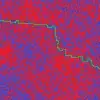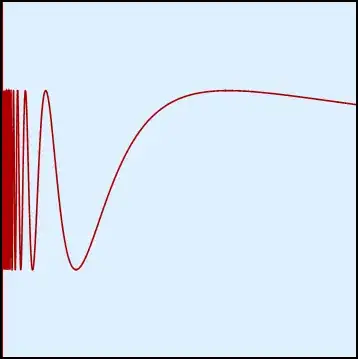In the game hex, at least one player always wins because they can form a chain of hexagons across the board. This led me to wonder, what happens if we generalise to infinitely many points?
Specifically, if every point in a unit square (including boundaries) is coloured red or blue, does there necessarily exist a continuous function $f: [0,1] \to [0,1]\times [0,1]$ such that $f(x)$ is either
a) Always red$\space\space$ and $f(0)=(0,a), f(1)=(1,b)$ for some a,b
b) Always blue and $f(0)=(a,0), f(1)=(b,1)$ for some a,b
Furthermore, if there exists a function such that (a) is true, then does that necessarily mean there does not exist a function such that (b) is true?
(In the example, red wins with the path shown an blue loses)
My intuition tells me that this is true, but I have no idea how to begin proving it. My best idea was to colour the regions to the left and right of the square red. Then anything connected to this red region is marked green. If the other side is connected to this then we are done. Otherwise, take the points along the boundary of this green region. They must be blue otherwise there exists a point closer to the region that is blue (by definition of the green region). Hence this boundary reaches all the way down to the bottom and we are done. But I'm not sure if this green region is well-defined or anything and have no idea how to show that it is.
(Also, I've got no idea what tag(s) to put on this, sorry)


similar-ish question
– QCD_IS_GOOD Sep 06 '17 at 05:30